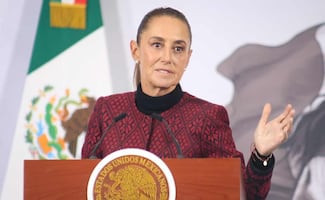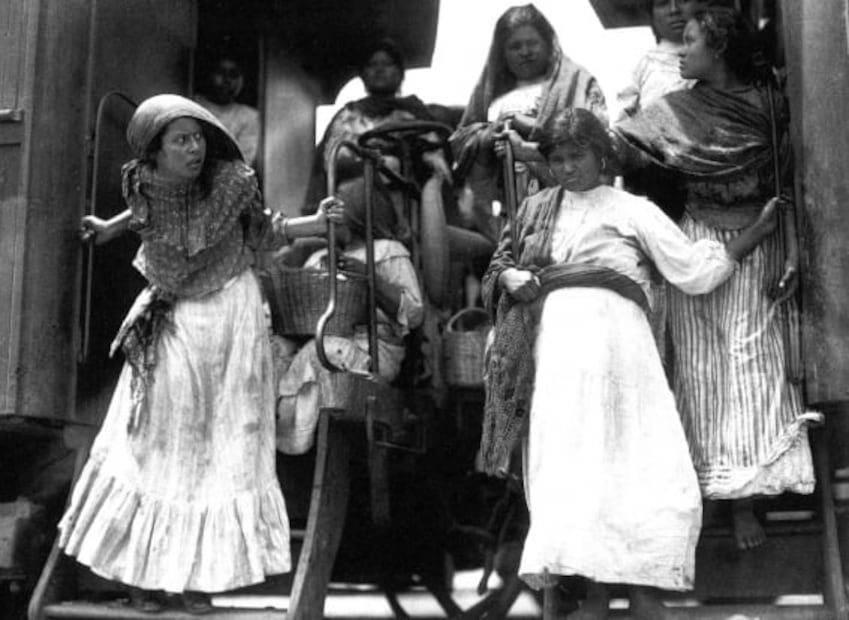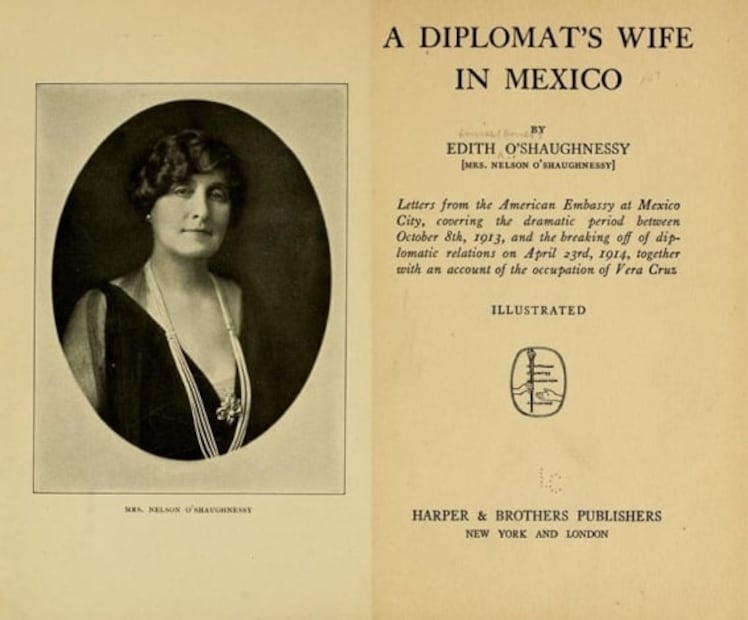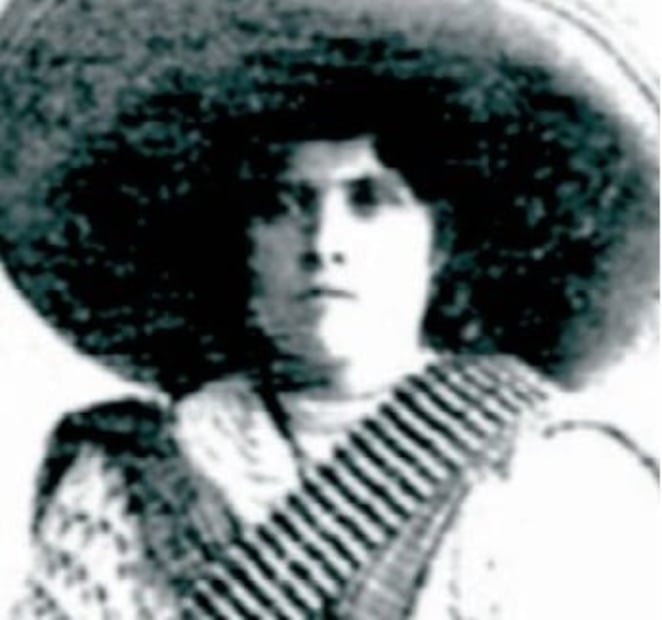Más Información

¡Ciudado con el frente frío!; Gobierno federal emite recomendaciones para enfrentar las bajas temperaturas

Banco Mundial recorta PIB de México a 1.3% para 2026; ajusta a la baja su estimación para el próximo año

Sheinbaum: Embajador Ronald Johnson, facilitador para llamada con Trump; siempre nos ha ayudado, afirma

IMSS, ISSSTE e IMSS Bienestar superan metas de atención en 2025; registran aumento en consultas y cirugías

Telcel niega filtración de datos por registro obligatorio de líneas; admite una “vulnerabilidad técnica”
The Mexican Revolution , (1910–1920) was a long and bloody struggle among a series of factions constantly shifting alliances which resulted in the end of a 30-year dictatorship in Mexico and the establishment of a constitutional republic.
109 years from the beginning of the Mexican Revolution , History still needs to recognize and tell women's stories as part of Mexico's history.
Most women who joined the political movement were middle-class , educated, and lived in the city. Many other women joined the political movement through their jobs as teachers or journalists, who often participated in the dissemination of liberal ideas.
Would you like to
?
Historian Martha Eva Rocha Islas explains in her book The Faces of Rebellion that women also acted as spies, sent clandestine letters, and distributed guns and that years later, President Lázaro Cárdenas issued a decree to acknowledge women's right to be recognized as veterans and as a result, at least 432 women were recognized and received a pension.

The depiction of women and their roles in the Mexican Revolution has resulted in an abstraction that limits female participation in the fight. The participants, in most cases, defended an ideological position .
There were women who accompanied men in the field, while others saw themselves as mere victims forced by the circumstances to participate in the revolt. At the time, women played multiple roles, "soldiers, cooks, spies, companions, mothers, professionals, etc." says sociologist María Ileana García Gossio .
History
is in debt and demands a version that proves that women were key figures who achieved more than a theme for corridos like "La Adelita. " During the Mexican Revolution, many women stood out for their participation.
La Adelita
, a female Mexican revolutionary icon usually depicted as a provocative woman, yet wearing bandoliers across her chest and a gun attached to her back, goes beyond the promiscuous woman often related to the previous description.
Soldaderas
(women soldiers), Rieleras (women waiting for their husbands at the edge of the train tracks), Valentinas and more often called Adelitas were women in the military who participated in the conflict of the Mexican Revolution.
Have you heard of
?
Juana Belén Gutiérrez de Mendoza
Born in Durango, she wrote radical feminist literature and was constantly imprisoned during Porfirio Díaz ’s dictatorship. Despite it, she continued spreading her ideas about the illegitimacy of politicians.
Gutiérrez de Mendoza had little hope on the transforming power of the Mexican Revolution, especially after the murder of Emiliano Zapata , whom she considered the only real leader.
She strongly believed in democracy and fought for people to vote to overthrow the military oligarchy so as to replace them with civilian officials .

María de la Luz Espinoza Barrera
In 1910, she was appointed as Lieutenant Colonel by General Emiliano Zapata , for showing her bravery and courage, as well as acute dexterity as a horsewoman.
Luz Corral
She lived in San Andrés, Chihuahua where Pancho Villa arrived in 1910. Villa fell in love with her and immediately proposed to her. Luz Corral accepted and although Villa had already proposed to other women in Chihuahua, they got married in 1911 . The Revolutionary leader had many wives, but Corral was his first and the only known to contribute to his political career .

Carmen Vélez
Known as “La Generala” (The Woman General), she commanded nearly 300 men who fought in the states of Hidalgo and Tlaxcala .
Dolores Jiménez y Muro
She was a socialist and political activist from Aguascalientes . She was a member of the newsroom of several leftist publications such as The Mexican Woman .
In 1911, Jiménez y Muro planned a conspiracy to make Francisco I. Madero president of Mexico, however, in contrast to him, she believed in social and economic reforms . She was also an advocate of the decentralization of the education system , fair wages , access to affordable housing , as well as guarantees for the indigenous population .
Clara de la Rocha
She was the commander of a guerrilla during the Storming of Culiacán, Sinaloa in 1911.

Margarita Neri
Born in Quintana Roo in 1865, she had been the owner of a Hacienda before the Revolution. After being abandoned by the men during the conflict, she created her own army of nearly 1,000 men in just two months. She knew how to shoot and ride horses and directed her troops in Tabasco and Chiapas in looting campaigns .
María Quinteras de Meras
She participated in 10 battles and was appointed Colonel in the Villa Army for her merits. She was highly respected by Pancho Villa . This soldadera showed remarkable military skills during her three years in the Villa Army. She dressed as a revolutionary man and people thought she had supernatural powers because of her skills with firearms. After the Revolution, she and her husband rejected any kind of remuneration from Villa for their services.
Elisa Griensen Zambrano
She was a young woman from Parral, Chihuahua . At only 12 years old, she was already a strong believer in Villa and a strong opposition to American forces in Mexico. She herself gathered a group of women and children to fight the Pershing troops in 1916 . With sticks and weapons, they forced Commander Frank Tompkins and his troops to leave Parral while saying “Viva México, Viva Villa.”

Ángela Jiménez
She was an expert in explosives. She obtained the title of Lieutenant in the Villa Army.
Encarnación Mares “Chonita” de Cárdenas
She obtained a very high position in the rebel forces against Victoriano Huerta . She was upgraded from sergeant to lieutenant for her outstanding performance in the Battle of Lampezo in Nuevo León.
Petra Herrera
Known as “Pedro Herrera,” she formed her own army made up of women, calling herself “Generala.” She fought by the side of the Madero forces in the Storming of Torreón, Coahuila, where federal forces were expelled.
She wore man’s clothes to participate in the Revolution but later she was able to dress as a woman. Despite her outstanding performance in the Storming of Torreón, Pancho Villa did not give her credit for being a woman. Herrera became independent and formed a group of approximately 1,000 soldaderas .
She became an ally of Venustiano Carranza and became a Colonel , for the title of General was denied to her.
Have you heard of the locomotive named after a
?
Edith O’Shaughnessy
She was a writer from South Carolina married to an official of the U.S. Embassy in Mexico . She wrote very descriptive letters to her mother while she lived in Mexico City . These letters were collected in a book that offers the American perspective of the Mexican Revolution.

Hermila Galindo
She was the editor of the women’s magazine Modern Woman . In 1915, she worked in favor of Venustiano Carranza and addressed feminist groups to motivate them to fight for their rights. She was an advocate of sex education for women and firmly believed they deserved all rights men had, including the right to vote .
Elisa Acuña Rossetti
A rural teacher in Hidalgo, Acuña Rossetti had liberal ideals that took her to work with the Flores Magón brothers in the newspaper “El Hijo del Ahuizote” in Mexico City.
During the Revolution she co-founded and wrote in the Vésper, La Guillatonia, Fiat Lux, and Nueva Era newspapers. She was also part of libertarian women’s groups like las Hijas del Anáhuac and Las Hijas de Cuauhtémoc , and joined Zapata’s Army after the murder of Madero.
Elena Torres Cuéllar
From Guanajuato, she studied to become a teacher. Even before the Revolution, she wrote articles criticizing Porfirio Díaz , some of them signed as “La Guanajuatense” (The Woman from Guanajuato). During the Revolution, she joined the Yucatán’s Socialist Party and years later founded the Mexican Feminist Council .
From the pedagogic trench, Torres Cuéllar endorsed schools to get away from priests in favor of logic and scientific education . She endorsed equality and decentralization .
Rosa Bobadilla
Known as “La Coronela,” she inherited the position of her husband after his death fighting by the side of Emiliano Zapata . She was a remarkable leader, she fought the federals while commanding 200 peasants .
Zapata gave her properties in downtown Cuernavaca to attend widows and orphans of the Revolution and she also fought to dissolve economic inequalities caused by the Porifiriato.

Have you heard of
?
Noticias según tus intereses
[Publicidad]
[Publicidad]









